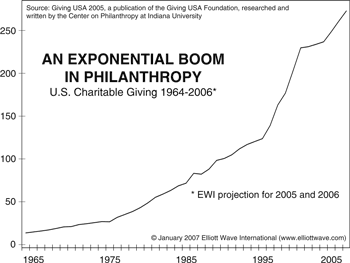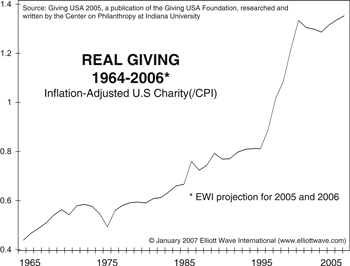BREAKING NEWsdsdsS
January 11, 2007
Rockefeller Firm Tells Would-be Buffetts How to Give Money Away
Melissa Berman bears the burdens of the whole world. Berman, 51, who leads Rockefeller Philanthropy Advisors in New York, is working for millionaires who've done well -- and are eager to do good. And with philanthropy in vogue, her phone keeps
ringing with more calls from hedge fund managers, real estate moguls and technology entrepreneurs.
“It's getting intense,” says Berman. “There's a lot of new wealth, and people are very focused on doing something with it,'' she says.
Rockefeller Philanthropy Advisors, a nonprofit charity, helped steer about $150 million to U.S. and international charities in 2006, twice the amount of 2002, Chief Executive Officer Berman says. Since June, when Warren Buffett said he'd hand most of his $40
billion fortune to the Bill & Melinda Gates Foundation, Berman's client list has jumped to about 135 from 120. Another 45 potential donors are in the wings. She's doubled her staff, to 32, in three years.
Berman belongs to a growing class of charity advisers catering to the new rich, a group that's proving as ambitious about parting with their money as they were about earning it.
The biggest financial firms, including Citigroup Inc. and JPMorgan, Chase & Co., are adding philanthropy consultants. The services are becoming necessary to hold on to rich clients, who increasingly see charity as an integral part of managing family wealth. At Harvard University, Charles W. Collier, a senior philanthropic adviser, has started helping wealthy alumni fund more than just the school.
“This is a cottage industry that's about to become a lot more than that,'' says Tom Reis, a program director at the 76-year-old W.K. Kellogg Foundation in Battle Creek, Michigan. Kellogg, founded by the breakfast-cereal family, is the seventh-biggest U.S.
philanthropy, with $7.8 billion in assets. ``It's like everything in philanthropy,'' Reis says. ``It's exploding.''
Enriched by rising financial markets and moved by images of natural disasters from the U.S. Gulf Coast to Thailand and Pakistan, Americans are giving to charity like never before. Donations rose 6.1 percent to $260.3 billion in 2005 from a year earlier, including $7.4 billion for disaster relief, according to the Glenview, Illinois-based Giving USA Foundation.
Philanthropy is also fashionable because of the examples of public spirit set by Buffett and Gates, the world's two richest people, says Steve Gunderson, president of the Council on Foundations. “Their personal commitments to give up their resources sent a signal to the rest of society that this was the appropriate thing to do. It almost makes it a fad.''
Other celebrities are adding juice, including Lance Armstrong, the seven-time Tour de France winner and cancer survivor, rock star Bono, actress Angelina Jolie and talk-show host Oprah Winfrey.
Bloomberg |
| April 2007 |
| S |
M |
T |
W |
T |
F |
S |
|
1
|
2
|
3
|
4
|
5
|
6
|
7
|
|
8
|
9
|
10
|
11
|
12
|
13
|
14
|
|
15
|
16
|
17
|
18
|
19
|
20
|
21
|
|
22
|
23
|
24
|
25
|
26
|
27
|
28
|
|
29
|
30
|
|
|
|
|
|
|
|
 |
|
« Previous |
Main Page
| Next »
|
Just Like 2000, Investors Want to Give Until It Hurts
By: Pete Kendall, January 11, 2007 |
“[Philanthropy is] a huge, looming thing,” says a philanthropy specialist. “I don’t think most people have really grasped how consequential and transformative that money is going to be.” It may be transformative and consequential but not in the way the new rich believe. The problem with “coming to terms” with money is that it has a tendency to disappear soon afterwards.
The Elliott Wave Financial Forecast, April 2000
|

Here’s a look at the virtually straight up course of charity in the United States over the course of the last 40 years. Subscribers will notice an uncanny resemblance to the chart of U.S. financial assets that was the lead item in this month’s issue of The Elliott Wave Finanicial Forecast. The upward pitch in the financial assets chart is quite steep over the last two years, but this may also be true for U.S. charity. Totals for 2005 and 2006 are not yet available. Based on 2004’s 5% growth rate, I estimated a jump to $273 billion in total philanthropy in 2006. The article at left suggests this is a conservative estimate. The three-year doubling of volumes handled by consultants since 2002, suggests a surge that may actually resemble the burst in financial assets held by financial institutions. In any case, the long-term rise in both charts represent remarkably persistent uptrends.

Here’s another version in which the annual U.S. charity total is adjusted for inflation by dividing by the CPI. This version fleshes out some of the few hiccups in the uptrend. The only declines are in 1970, 1973-75, 1980, 1987, 1990, 1995 and 2001-03. These are all coincident or slightly behind financial asset declines in 1969, 1973-74, 1977, 1987-88, 1994 and 2002, which are also in line with down years for stocks. So, there’s an unbelieveably tight correlation between the Great Asset Mania and charity, just as Elliott Wave International first suggested in 1999/2000. The urge to “give back” rises with the bull market, but it becomes overwhelming as social mood shifts from up to down. The charts show how the mood supported increased giving in every year of a strongly rising trend, but it was only back in 2000 that philanthropy reached fad status. The final paragraphs of this article and our Socio Times entries of June 16, June 19 and September 20 show that charities are raking in the cash at an even more feverish pitch.
But as the Bloomberg story suggests giving money away isn’t as easy as it seems. “You can't underestimate how hard it is to give away money well,” says a philanthropy consultant. We agree, but not for the cited reason. The big problem is that just when people are ready to get serious about their fortunes, they have a tendency to evaporate. The rapid approach of such a juncture is evident by the fact that even the most elaborate effort to save the world is now encountering skepticism. A recent Los Angeles Times analysis finds that while the Bill and Melinda Gates Foundation is doing a great deal to fight disease and poverty in Africa, it is also supporting enterprises that are doing just the opposite. The Gates’ investments also include large holdings in the Italian petroleum giant Eni, Royal Dutch Shell, Exxon Mobil, Chevron, and Total of France, which are reputedly big polluters in the same region. The LA Times reveals that “hundreds of flares at oil plants in the Niger Delta have caused an epidemic of bronchitis in adults, and asthma and blurred vision in children. Many of the 250 toxic chemicals in the fumes and soot have long been linked to respiratory disease and cancer." It quotes a local physician, “We're all smokers here, but not with cigarettes.” The coverage foreshadows the social dissension and complex morality that inevitably come with a bear market. As social euphoria fades, the growth in philanthropy and financial assets will surprise the world with a coincident break from their long uptrends. It should be far more persistent than the downward blip that began the new century.
|
|
Post a comment
|
|
|
 |
| RECENT ARTICLES |
 |
April 16, 2007
Does Imus Cancellation Radio a Bear Market Signal?
read more |
April 12, 2007
One Small Coffee Shop Uprising for Starbucks, a Grande Leap for Labor
read more |
April 11, 2007
Dazzling Finish: Cars Bring Once-Boring Shades To Life
read more |
April 10, 2007
T in T-Line Stands for Top
read more |
April 5, 2007
The Fight for a Free Vermont? Must be a Big, Big Turn
read more |
|
|
| ARTICLE COMMENTS |
 |
|
|
|
|
